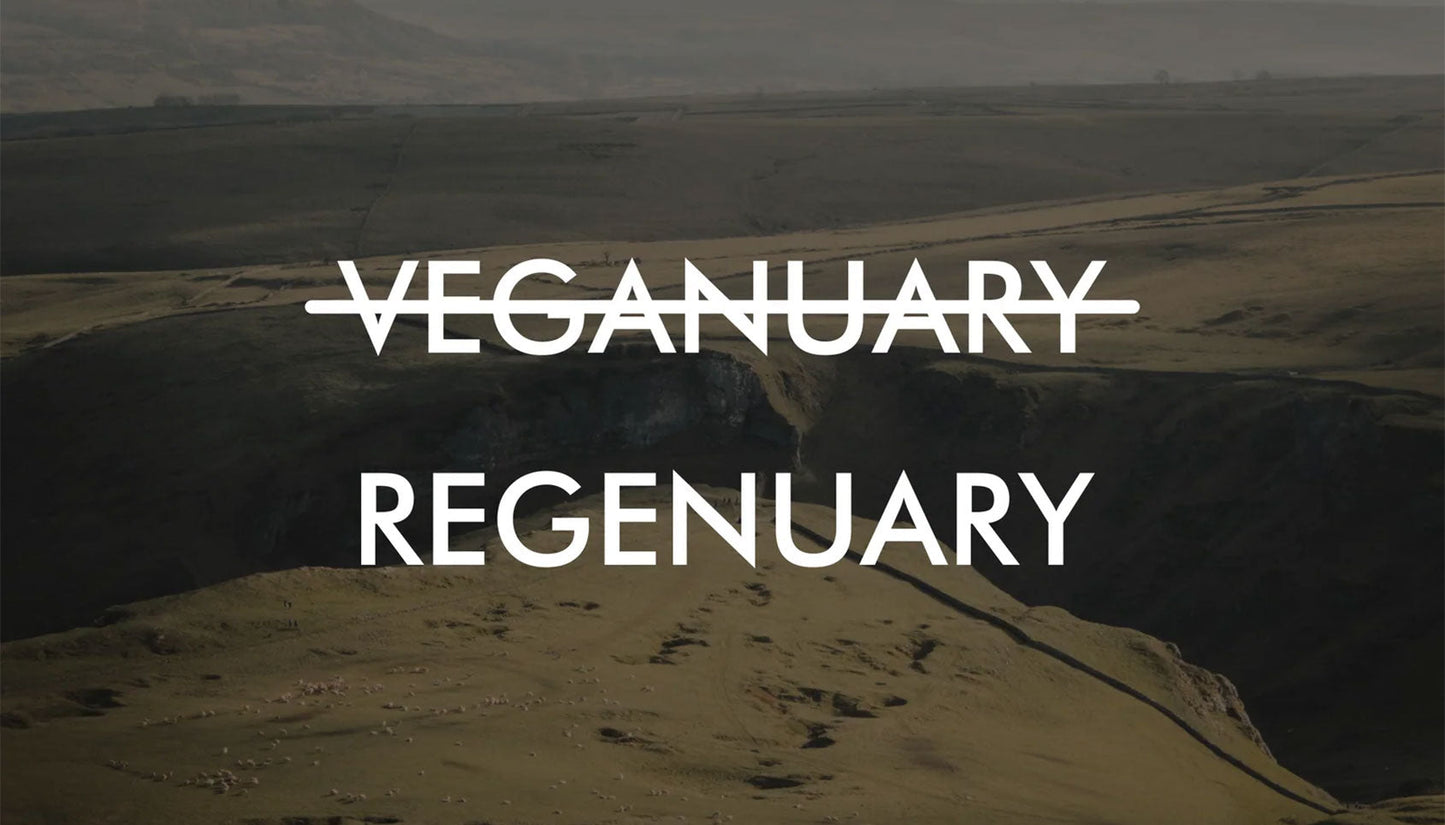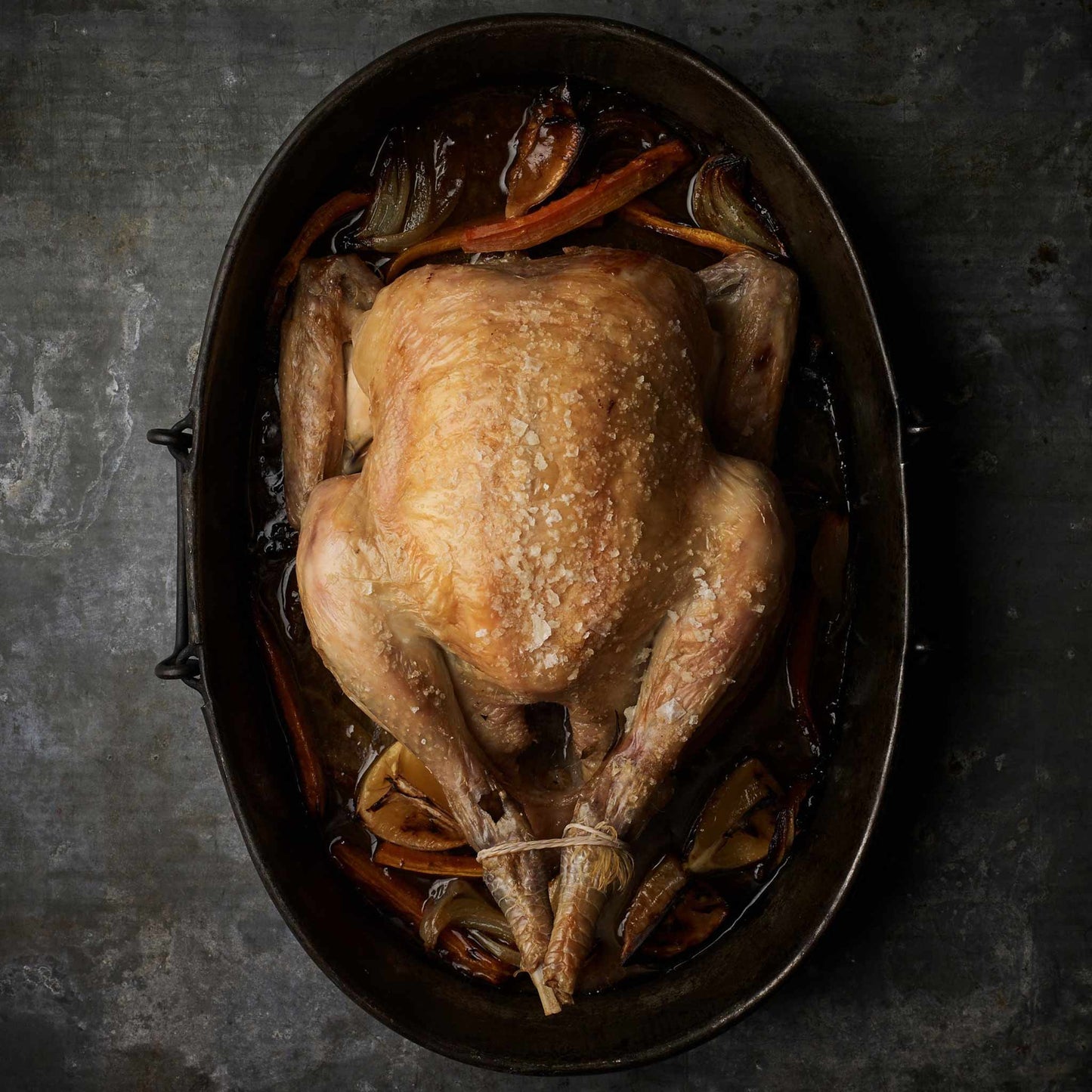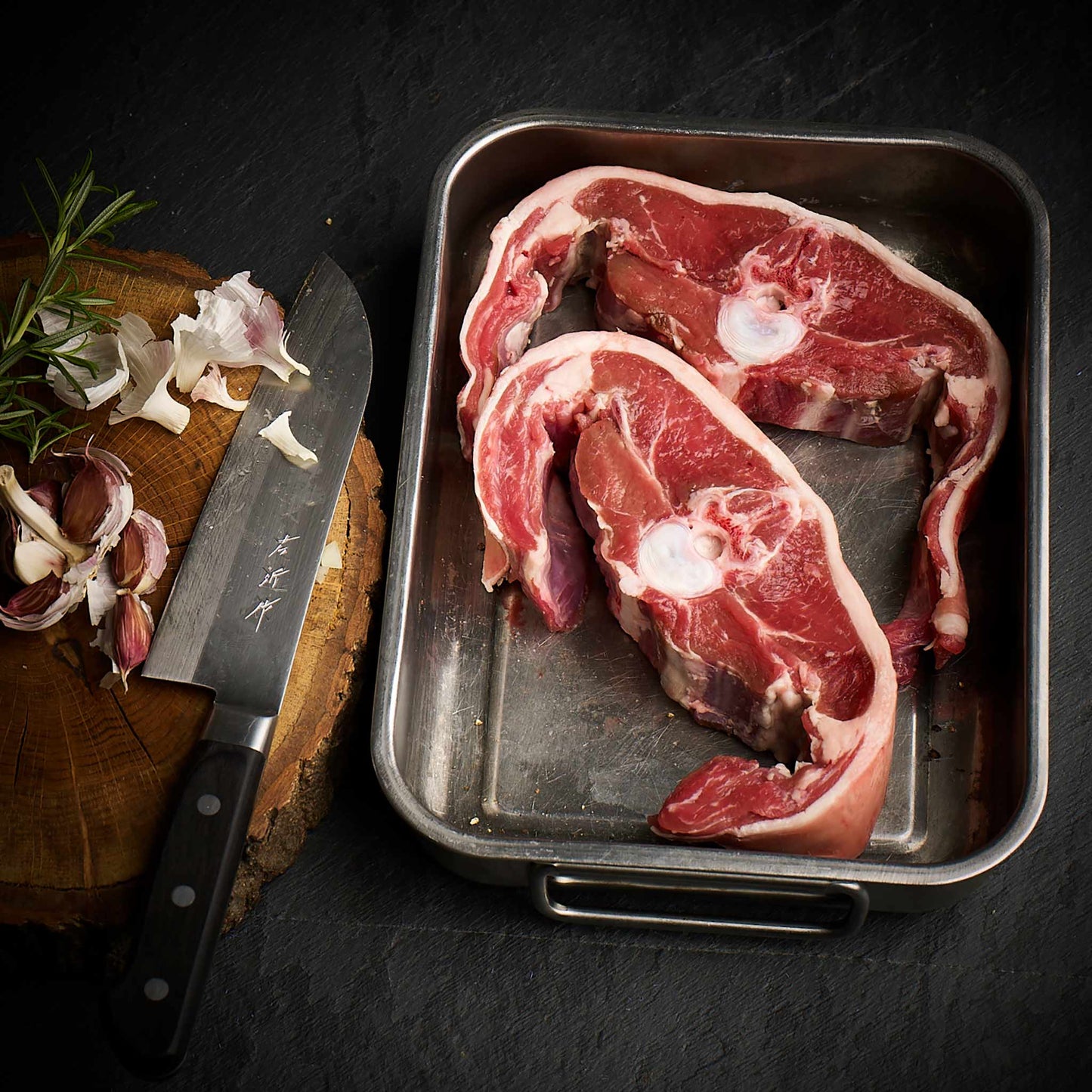We source our chicken from one farm in Leicestershire. The farm is Pasture for Life certified and rears truly free range, outdoor birds.

Almost exactly a year ago we posted a Facebook article written by one of our founders after spending an evening in Central London seeing a lot of posters from food brands regarding Veganuary. It was clear that the food industry was on the bandwagon and everything from KFC to Subway and Burger King were offering vegan options for the month.
We started to wonder what the impact of this would be.
Someone who eats a standard diet of processed and junk foods and is omnivorous will be consuming certain amounts of factory-farmed meats and dairy. If this person becomes vegan and chooses to eat a diet high in vegetables, pulses, seeds, fruits and roots, will their environmental impact be lower? Absolutely.
So what is Veganuary?
On the website for veganuary it states...
'We want....a world. A world where food production does not decimate forests, pollute rivers and oceans, exacerbate climate change and drive wild animal populations to extinction.'
Sound familiar? It's essentially our manifesto here at The Ethical Butcher - so why is there such a divide between supporters of veganuary and us?
Technically you can participate in veganuary by simply not eating or using anything of animal origin for a month. This could be consuming GMO soy grown on what used to be Amazonian rainforest; it could be eating chips fried in soybean oil; it could be any number of vegetable based foods produced using destructive mono-crop methods and processed into oblivion. This is all vegan, but hardly good for the planet (or us!)
So what would #regenuary be?
The concept behind regenuary is simple. For a month, consider the impact of everything you eat and try to source as much as possible from regenerative agriculture, regardless of whether your diet is vegan or omnivorous.
The start of it all
The original post caused quite a lot of controversy and had over a million impressions and organically amassed almost 5,000 shares and comments. What started as an idea or a thought experiment resonated with some and angered others.
We were accused of vegan-bashing then - and also now on our follow up post this year, which in 24 hours has already reached 150,000 people from being shared 2500 times. But, vegan-bashing is not what we are doing.
We used an example of someone choosing to not eat meat for a month and swapping in an avocado as a source of fats instead. This was designed as an illustrative example, showing that vegan swaps are not always better for the environment. We're aware that not all vegans eat avocados and equally aware that many omnivores eat avocados too - but since the comment has caused a stir, we're taken a deeper look at the comparison.
How regenerative agriculture compares - the avocado comparison.
We absolutely have to stress again that we know that omnivores also eat avocados and this is not some 'vegan-only sustenance'. It is used for illustration only but provides a good example of our main message: we ALL need to make better informed choices.
The best case cow
A single cow provides us with about a million usable calories for human consumption. These calories are a mixture of fats and proteins that are very bioavailable to us. If that cow could be kept in a system that is regenerative, there would be an increase in biodiversity on the land the cow shares. There are countless other animals, from soil microbes to insects to rodents and small mammals to pollinators and songbirds and raptors - the grazing herbivore is an important part of this system, contributing to it in a positive way. The regenerative system can help to lock more carbon into the soil than the cow releases.
The farms we choose to work with at The Ethical Butcher go to great lengths to reduce their environmental impact. They use abattoirs local to them to minimise transportation; after slaughter the carcass will be aged in a temperature controlled environment, which at this time of year will require very little adjustment; the aged carcass is sent to us using a temperature controlled van and transferred to our butchery unit, where we will cut and package the meat before sending to our customers using a carbon neutral carrier in non-plastic packaging.
Admittedly this is the best case scenario for a cow, but it is real and it is what we do. This is how our farmers produce and is an accurate demonstration of the farm-to-plate supply chain for meat from The Ethical Butcher.
The typical avocado
Let's compare this to an avocado. But, we can't do a reasonable direct comparison between a single avocado and a single cow, as it would take roughly 6,250 avocados to supply the same calories as our cow. So, we'll compare a typical avocado crop of around 6,250 with our single cow.
What's the impact and implication of this swap? We could have used an Impossible Burger or Quorn chicken as an example, but as the original piece mentioned avocado we'll stick with it.
Avocados are grown in many places but for this example let's assume they are from Mexico as the example is set in January and this would be the start of peak season for the Mexican harvest.
Each avocado requires 320 litres of water. Since avocados tend to be grown for export and not for local communities, this prioritisation has a negative impact on local food security. Furthermore, the water is exported within the fruit and is lost to the local ecosystem where the fruit was grown. It can be said that beef production uses a lot of water, but here in the UK we have a lot of the green and blue water that our farmers use and it is not lost from the country.
Also, it's hard to know the true impact of production when it's so far away. Avocado production drove 30-40% of recent deforestation in Michoacán. These local forests are important for biodiversity, livelihoods and for providing the catchment basins that supply water to local communities and Mexico City, but have been devastated by the impact of European and USA demand.
When picked, avocados are very sensitive to damage and have to be treated gently. They're picked when they're under-ripe and immediately put into a temperature controlled environment, where they are stored under 12C (the optimum temperature is said to be as low as 5.5C) - far under the natural temperature of the tropical environments, meaning it takes a considerable amount of cooling and energy resources to maintain.
After picking, they are transported to a hub which is also a controlled environment for packing which can be in plastics (not containing ethylene) or cardboard materials and often dry ice (yes, solid carbon dioxide) is used for cooling and to modify the atmosphere.
The avocados we eat in the UK arrive by boat, with the journey taking up to 6 weeks from Mexico. Very few are sent by air. During this time on the boat the conditions need to be kept just right and this means cooling and modified gasses, using both energy and resources and the boat is burning diesel all the way. A typical container ship at 20-25 knots will be using 63,000 gallons of marine fuel per day. Admittedly, this is not just to bring avocados to the UK, but it's still a part of the system.
Once the avocados are in the UK they are packaged again to prevent further damage, before being gas ripened using ethylene and more often than not ending up packaged in plastic on our supermarket shelves.
After all that, you get them home and open one up and they're all brown and black inside... Ok, not always - but there is a lot of wastage.
So how does this add up?
In our best case cow scenario we would argue that this is the more ethical choice and actually the only one that is regenerative is the pasture raised beef. We also accept that our example is best case versus normal case but this is what can happen when the messages are overly simplistic.
Swapping out locally produced animal based products for a month needs careful consideration. If the unwitting consumer is already choosing well-reared meats, then a swap is probably detrimental. If they're consuming poorly farmed industrial meats, then they need to think again regardless.
So what about combining both Regenuary and Veganuary?
Our problem with Veganuary should by now be clear. technically it is possible to partake in Veganuary while consuming Brazilian soy but this is not regenerative and therefore not Regenuary approved. Ultimately, we consider regeneration to be more important than simply avoiding a food group.
If someone wants to give up eating meat for a month is it possible to partake in #regenuary? Is it possible to be vegan and prioritise regenerative foods?
Yes, it's possible. But not easy.
Assuming the consumer is in the UK, not too much grows here in January that contains the fats and proteins our bodies need. The vegetarian society lists these plants as being native and seasonal in January:
Apples, Beetroot, Brussels Sprouts, Carrots, Celeriac, Celery, Chicory, Jerusalem Artichokes, Kale, Leeks, Mushrooms, Onions, Parsnips, Pears, Red Cabbage, Salsify, Savoy Cabbage, Spring Greens, Spring Onions, Squash, Swedes, Turnips, White Cabbage.
A delicious and complex mix of flavours, certainly, but not complete nutrition - so what's the solution?
Not all imported foods mean high energy usage and environmental damage but if a consumer is choosing to participate in Regenuary it will be more difficult to research and source ingredients when avoiding animal based products.
In our next article, we will start to examine how to select foods from regenerative agriculture, whether you're a vegan or omnivore, and for one month try to participate in either Veganuary, Regenuary or both.
Many people have questioned our motivation for writing what could be seen as a provocative post, our motivation is very simple, we want people to think.



